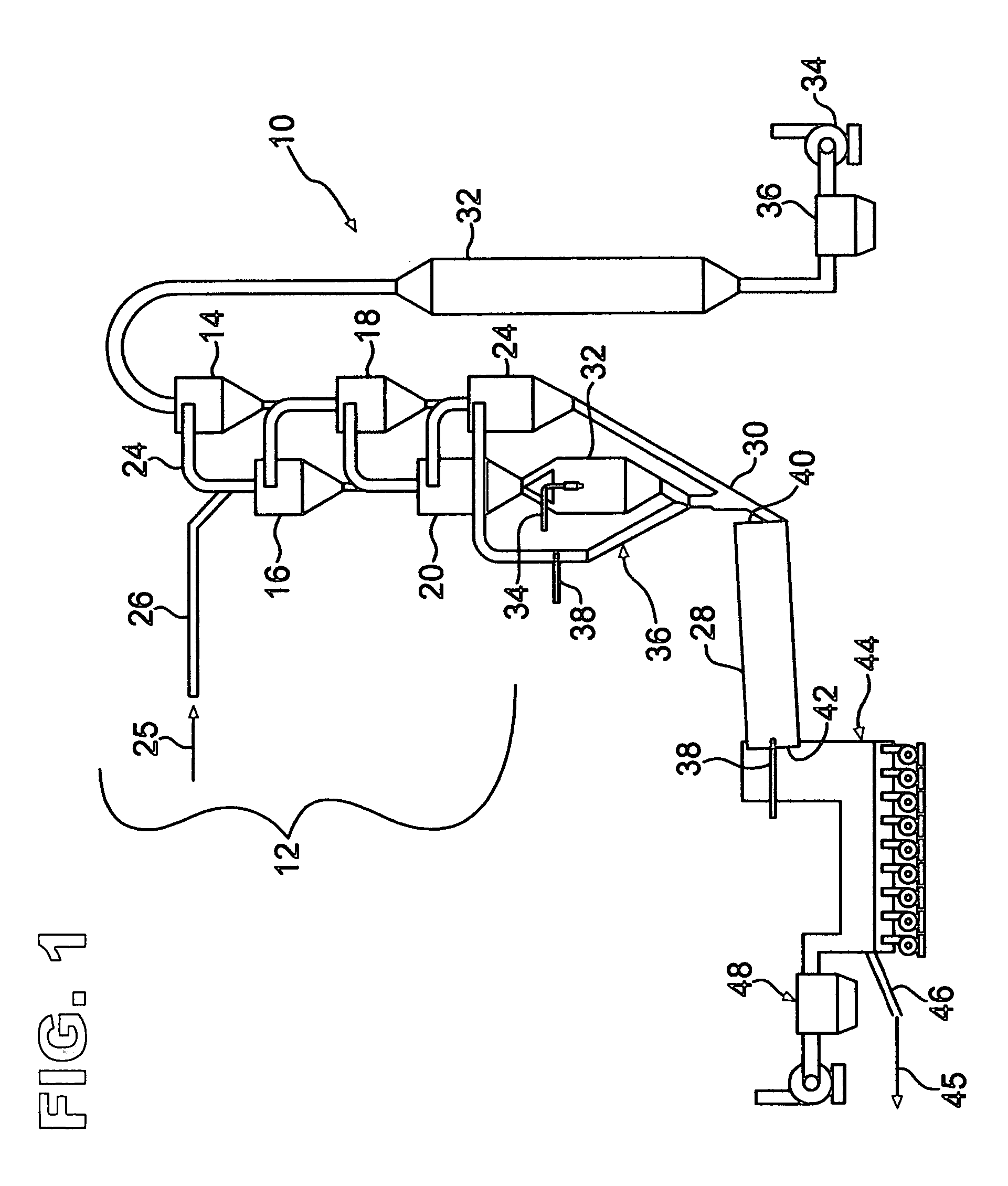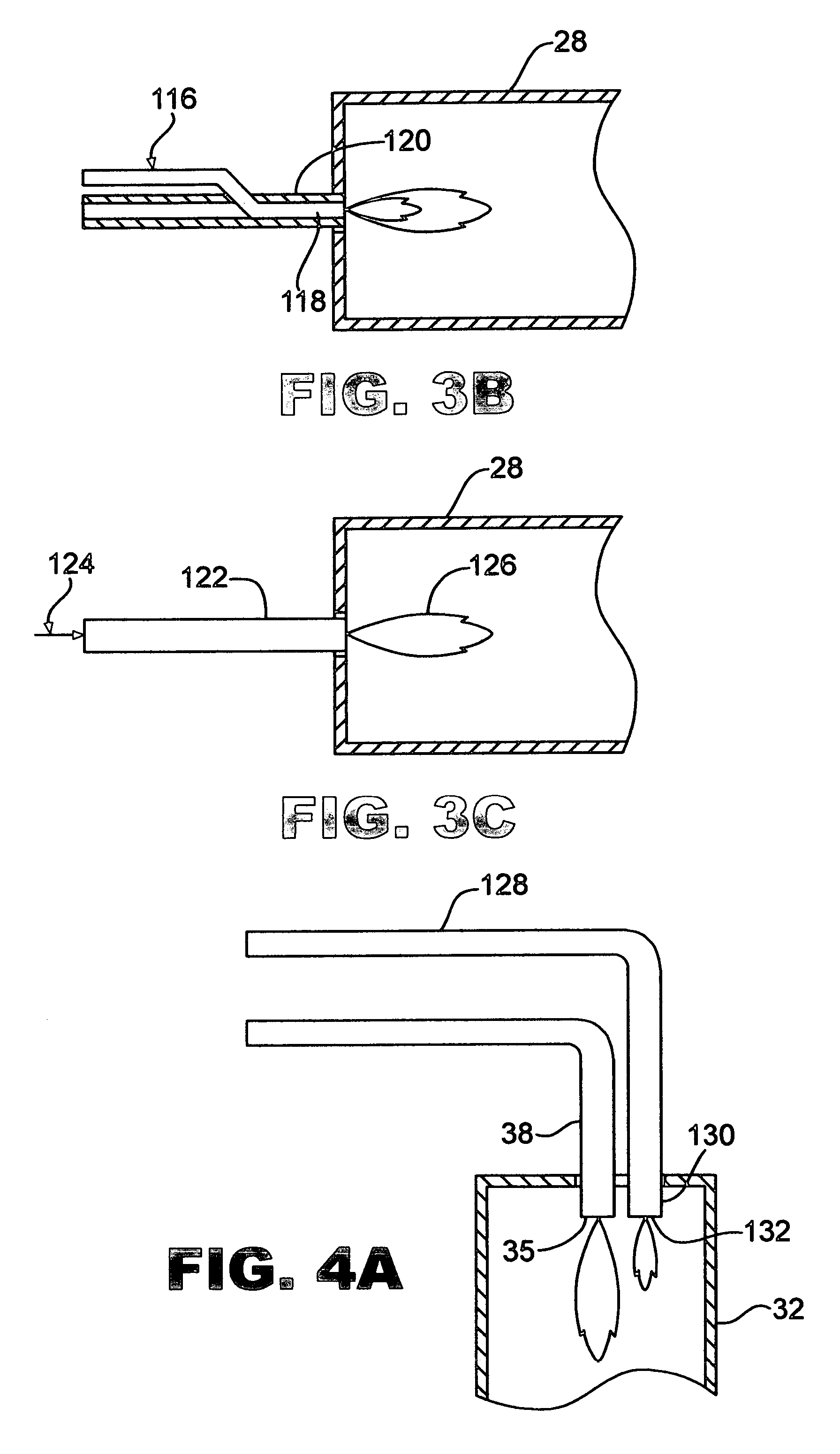Method and apparatus for drying wet bio-solids using excess heat from a cement clinker cooler
a technology of biosolids and cement clinker, which is applied in the direction of lighting and heating equipment, waste based fuel, furniture, etc., can solve the problems of not being able to disclose the use of indirect heat exchange, the largest cost item in cement manufacturing is fuel cost, and the inability to disclose the coupling of this process with the cement manufacturing process
- Summary
- Abstract
- Description
- Claims
- Application Information
AI Technical Summary
Benefits of technology
Problems solved by technology
Method used
Image
Examples
Embodiment Construction
[0028] Bio-solids, defined as residual by-products from biological activity or the residual by-product from processing biological material, are of interest for use as a fuel or a fuel additive in the manufacture of cement.
[0029] Table 1 sets forth types of materials that would be usable in the method and apparatus of the present invention.
TABLE 1Fuel % / Ash %Critical AshMaterialSolid % / Liquid %(Dry)Fuel BTU's / lb (Dry)ComponentsSewage Sludge15 / 8570 / 305,000-8,000P2O5, ClPaper Pulp20 / 8070 / 305,000-8,000Na2O, K2OIndustrial Sludges20 / 8050 / 505,000-8,000variesFood Processing20 / 8050 / 505,000-8,000variesSludgesAgri-Waste20 / 8050 / 505,000-8,000variesSludges
[0030] The foregoing materials are the wettest types of material that can be used in the method and apparatus of the present invention. Materials having moisture content above 10% by weight but less than the moisture content set out in Table 1 can also be used in the process of the present invention.
[0031] Of the materials in the foregoing t...
PUM
| Property | Measurement | Unit |
|---|---|---|
| temperature | aaaaa | aaaaa |
| temperature | aaaaa | aaaaa |
| temperature | aaaaa | aaaaa |
Abstract
Description
Claims
Application Information
 Login to View More
Login to View More - R&D Engineer
- R&D Manager
- IP Professional
- Industry Leading Data Capabilities
- Powerful AI technology
- Patent DNA Extraction
Browse by: Latest US Patents, China's latest patents, Technical Efficacy Thesaurus, Application Domain, Technology Topic, Popular Technical Reports.
© 2024 PatSnap. All rights reserved.Legal|Privacy policy|Modern Slavery Act Transparency Statement|Sitemap|About US| Contact US: help@patsnap.com










